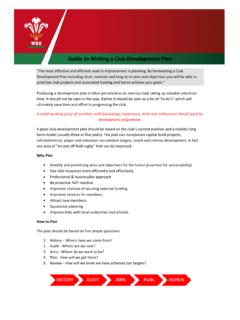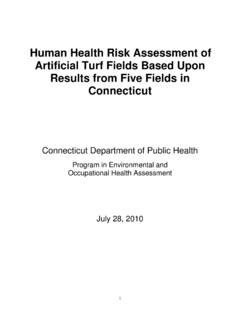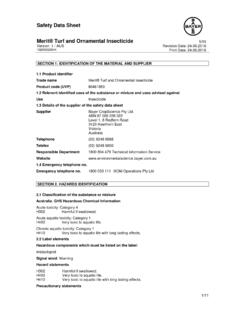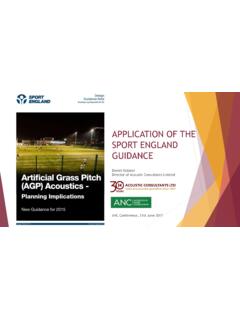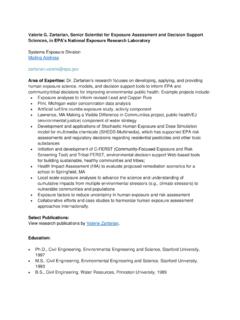Transcription of CLUBHOUSES CHANGING ROOMS 2
1 1 CLUBHOUSES & CHANGING ROOMS 2- PROJECT MANAGEMENTF acilities Guidance Note 22 Facilities Guidance Note 2 CLUBHOUSES & CHANGING ROOMS 2 - PROJECT MANAGEMENTINTRODUCTIONThis guide provides a checklist of standardsfor the design and construction of changingrooms and CLUBHOUSES for a new facility,extension to your existing clubhouse orrefurbishment of your existing facilities. Itis intended as a guide and should assistboth your project steering group andappointed consultants when undertakingthe feasibility study , scheme developmentand any applications for 1:PROJECT BRIEFIt is recommended that your project steeringgroup, prior to commencing the proposeddesign and the selection and appointmentof any professional team, assemble thefollowing information.
2 A site plan that shows the extent andscope of your land ownership, legalagreements, covenants, way-leaves andrights of way, etc existing buildings, mains services andpitch layouts, local knowledge ofground conditions and site factors grounds maintenance arrangements existing and future programme of use,including age and sex of players, male, senior female, junior male,junior female car parking requirements access and usage by people/players withdisabilities (Facilities Guidance Note 4 Accessible Facilities & Compliance with the DDA) initial outline and schedule of proposedaccommodation for CHANGING roomsand support accommodation other sports uses and events on the site.
3 This is of particular relevance if your clubcaters for a number of different sportsthat operate in different seasons or takeplace indoors details of any initial consultations withthe Local Planning Authority, otheragencies and organisations funding sources and initial consider the options in whether tobuild new facilities or refurbish/extendexisting buildings. When related to the costof carrying out a refurbishment project,where refurbishment project costs are inexcess of 70% of a replacement building, theyshould be not considered of sufficient valuefor money in the long term (Sport England).Access and usage by people with disabilitiesneed to meet the Disability Discrimination Act1995 and the Disabled Rights CommissionCode of 2:APPOINTING CONSULTANTSThe selection and appointment of yourprofessional team is an important processand it is recommended that you refer to theSport England/CABE document; BetterPlaces for Sport: a client guide to achievingdesign.
4 The guide provides a best practiceguide on preparation, design, constructionand use and is available via the design quality, the architect or designeris the most important choice. The RoyalInstitute of British Architects (RIBA) ClientAdvisory Service can supply names ofsuitable designers. The WRU would alsorecommend the appointment of aConstruction & Design Manager and/orIndependent Building Control Advisor to theproject and that the club ensures that allcontractors carry suitable ProfessionalIndemnity Guidance Note 2 CLUBHOUSES & CHANGING ROOMS 2 - PROJECT MANAGEMENTSTAGE 3:FEASIBILITY STUDYEach site will vary and have specific sitefactors that will influence design solutionsand project details.
5 Your feasibility study isa crucial and necessary process that willenable your project steering group andprofessional team to make informeddecisions for submission of a well designedproject. The feasibility study should coversuch areas as: Site and buildings Access, car parking and emergencyvehicle access (refer to Sport England Guide on Car Park and LandscapeDesign) Site boundaries and adjoining owners,including use Topography (levels, trees and specialfeatures) Existing mains services, loading andcapacity Orientation, view of pitches andexposure to wind and weather Site locations (alternatives) Geotechnical investigation (groundconditions)
6 Town planning issues including landdesignations, Unitary Development Planand Local Plan Audit of existing buildings and facilitiesincluding general conditions Access for people with disabilities Existing accommodation, includingplans, sections and elevations Safety and security Grounds team/appointed consultants will beable to develop the initial brief into anarchitectural brief and schedule ofaccommodation with actual room sizes andperformance standards. This schedule willalso enable a footprinting and optionsappraisal to be carried out. The range andnumbers of pitches should be taken accountof in relation to the number of changingrooms, showers and toilet arrangementsthat will be required, together with thetypes of usage, male/female, age andpeak demand, and provision of officials CHANGING and first aid/treatment term developments and extensionsshould also be considered.
7 Your sportsdevelopment plan may anticipate a futureincrease in players and types of users. Spacefor additional CHANGING ROOMS and socialaccommodation should be allowed (DIAGRAM 1)Ideally, any entrances to the pavilion should beoriented away from the direction of theprevailing wind. However, to permitcomfortable viewing of the principal pitch fromthe pavilion, the building should not face thesetting sun. Club room glazing provided forviewing pitches must be carefully specified anddetailed to combat glare; roof overhangs orscreening may be required. Consider carefullythe use of safety glazing. Diagram 14 Facilities Guidance Note 2 CLUBHOUSES & CHANGING ROOMS 2 - PROJECT MANAGEMENTLOCATION(DIAGRAM 2) clubhouse and CHANGING room developmentneeds to be considered in the context of thesite as a whole.
8 The shape and contours ofthe available site will obviously influence thelocation of a pavilion. However, in mostinstances, the proximity of an existing accessroad and/or the necessary main services willbe of prime importance if unnecessary andexpensive site development costs are to beavoided. It is essential that the site shouldprovide: sufficient space for the proposedpavilion as well as space for futureexpansion adequate car parking provision,including the potential for overspillparking access for service and emergencyvehicles, service deliveries, maintenancevehicles and equipment a reasonable relationship with thesports spaces it will serve number of pitches should be in relationto the number of CHANGING ROOMS ,showers and toilet (DIAGRAM 3)
9 The development of the project brief into aschedule of accommodation with proposedsizes will enable your consultants to carry outan options appraisal that includes critical sitefactors, possible locations and spatialrequirements related to the available option should be considered and t headvantages and disadvantages clearly shownand commented upon. Future developmentsshould also be shown. This exercise shouldlead to an agreed option being identifiedwhich can then be developed more fully withplans, sections and elevations so that theproposals are fully understood by yoursteering group. Diagram 2 Diagram 1 (continued)
10 5 Facilities Guidance Note 2 CLUBHOUSES & CHANGING ROOMS 2 - PROJECT MANAGEMENTACCOMMODATION(DIAGRAM 4)The scale and the type of the changingaccommodation depend upon the numberand type of pitches served as well as thedifferent sports that may use the facility. Thegeneral accommodation could include: CHANGING ROOMS Showers and dry off areas Toilets Separate officials accommodation Club room Bar and bar storage Cleaner s cupboard/store Entrance lobby Plant room Disabled toilets Kitchen Office First aid/physio room Equipment storage (social and sporting)Careful planning of the accommodation isessential to ensure a successful scheme andspecial consideration should be given to thefollowing points: Include an entrance lobby for even the smallest pavilion.
